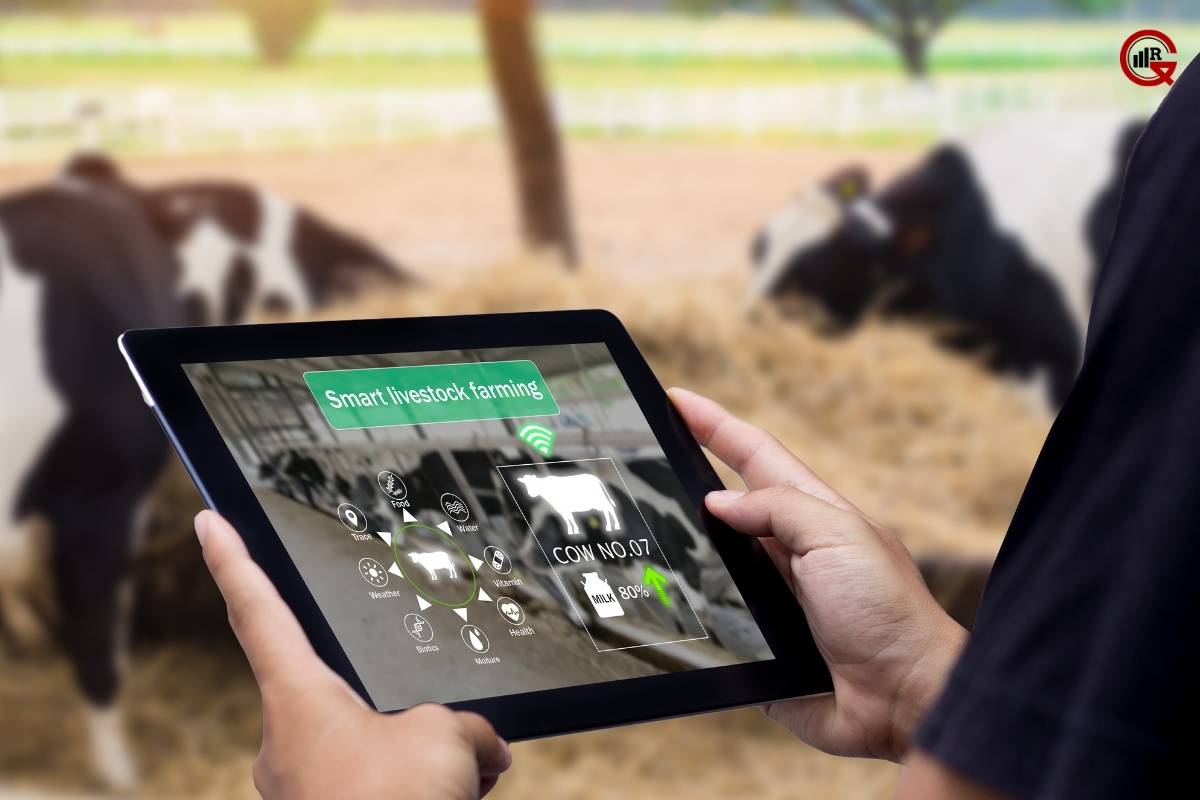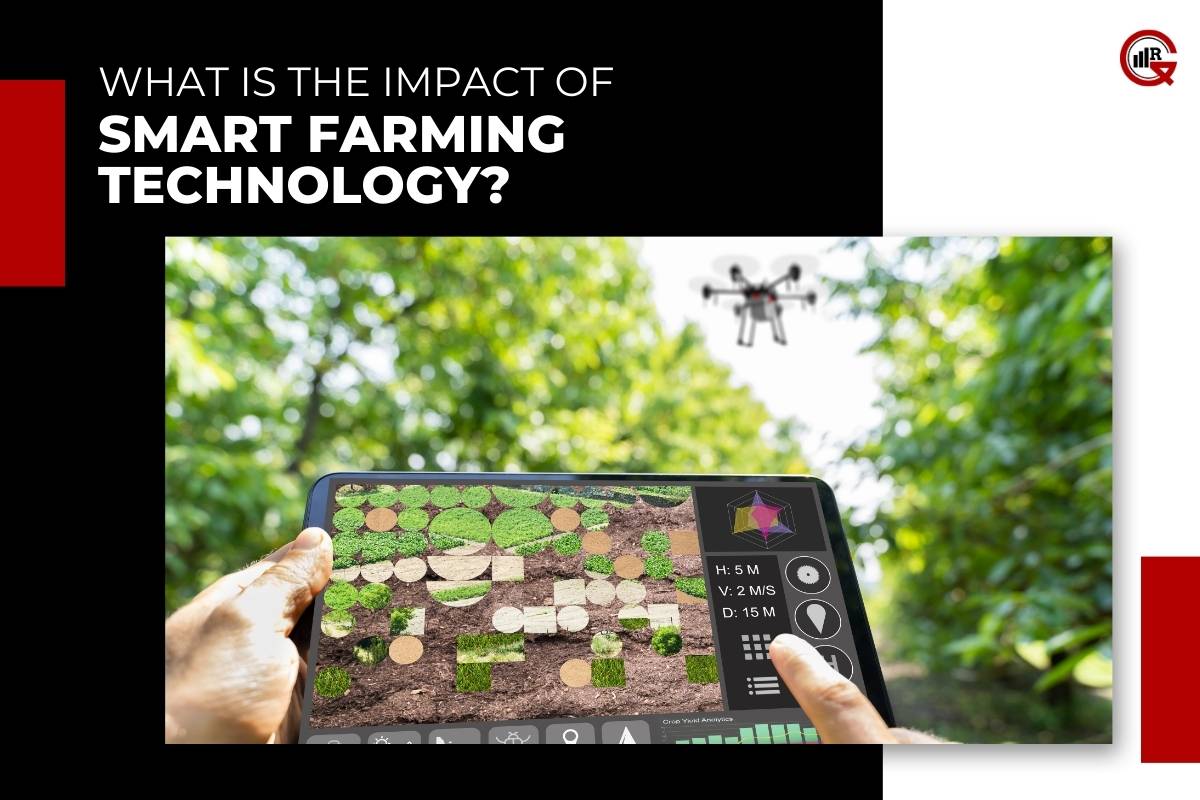Agriculture is undergoing a transformation driven by advancements in technology. Smart farming, also known as precision agriculture, is revolutionizing traditional farming practices by integrating cutting-edge technologies to optimize resource use, increase productivity, and minimize environmental impact. From automated machinery to data-driven decision-making, smart farming technology is reshaping the agricultural landscape and paving the way for a more sustainable and efficient future.
Here are 12 ways Smart Farming Technology transforming agriculture:
1. Automation and Robotics:
Smart farming technology encompasses a wide range of automated machinery and robotics designed to streamline farm operations and reduce manual labor.
Automated tractors, drones, and robotic harvesters are revolutionizing tasks such as planting, spraying, monitoring, and harvesting, leading to increased efficiency and productivity.
These technologies enable farmers to optimize resource allocation, reduce labor costs, and minimize the environmental footprint of agricultural activities.
2. Internet of Things (IoT) and Sensors:
The Internet of Things (IoT) plays a pivotal role in smart farming technology, connecting sensors, devices, and equipment to collect real-time data from the farm environment.
Sensors embedded in soil, plants, and machinery provide valuable insights into soil moisture levels, temperature, humidity, nutrient content, and crop health.
By leveraging IoT technology, farmers can make data-driven decisions, monitor crop conditions remotely, and implement precision irrigation and fertilization strategies to maximize yields while conserving resources.
3. Data Analytics and Artificial Intelligence (AI):

Data analytics and artificial intelligence (AI) algorithms analyze vast amounts of data collected from sensors, satellites, and drones to provide actionable insights and predictive analytics. AI-powered solutions can forecast weather patterns, predict crop yields, detect disease outbreaks, and optimize planting schedules, enabling farmers to make informed decisions and adapt to changing conditions. By harnessing the power of AI, farmers can optimize resource use, reduce waste, and increase profitability, ultimately leading to more sustainable and resilient farming practices.
4. Remote Monitoring and Control Systems:
Smart farming technology enables remote monitoring and control of farm operations, allowing farmers to manage their operations from anywhere with an internet connection.
Remote monitoring systems track equipment performance, crop health, and environmental conditions in real time, alerting farmers to potential issues and enabling timely intervention.
With remote control capabilities, farmers can adjust irrigation schedules, monitor livestock activity, and optimize energy usage, improving efficiency and reducing operational costs.
5. Precision Farming Practices:
Precision farming practices leverage smart farming technology to optimize inputs, minimize waste, and maximize crop yields while minimizing environmental impact.
Variable rate technology (VRT) allows farmers to apply fertilizers, pesticides, and water precisely where and when they are needed, based on site-specific data and crop requirements.
By adopting precision farming practices, farmers can achieve greater resource efficiency, reduce chemical runoff, and enhance soil health, contributing to long-term sustainability and profitability.
6. Connectivity and Integration:

Smart farming technology relies on seamless connectivity and integration between different devices, platforms, and systems. Cloud-based platforms and mobile applications enable farmers to access and analyze data, collaborate with experts, and manage farm operations from any device, anytime, anywhere. Integration with other agricultural technologies, such as blockchain for traceability and supply chain management, further enhances the efficiency and transparency of farming practices.
7. Sustainable Practices and Environmental Conservation:
Smart farming promotes sustainable agricultural practices and environmental conservation by reducing the use of chemical inputs, minimizing soil erosion, and preserving biodiversity. Conservation tillage practices, facilitated by precision agriculture tools, help to retain soil moisture, prevent erosion, and improve soil health by reducing the need for plowing and tilling. By adopting smart farming techniques, farmers can minimize the environmental footprint of agriculture, mitigate climate change impacts, and contribute to the preservation of natural resources for future generations.
8. Weather Forecasting and Risk Management:
Smart farming technology leverages advanced weather forecasting models and predictive analytics to help farmers anticipate and mitigate weather-related risks. Accurate weather forecasts enable farmers to make informed decisions about planting, harvesting, and crop management, reducing the impact of extreme weather events such as droughts, floods, and storms. By incorporating weather data into decision-making processes, farmers can optimize resource allocation, minimize crop losses, and enhance resilience to climate variability and change.
9. Livestock Monitoring and Management:

In addition to crop farming, smart farming technology extends to livestock monitoring and management, improving animal welfare, productivity, and profitability. IoT-enabled sensors and wearable devices track vital signs, behavior patterns, and feeding habits of livestock, providing insights into health status, reproductive cycles, and performance metrics. Automated feeding systems, remote monitoring cameras, and GPS-enabled collars enhance livestock management practices, enabling farmers to optimize feed efficiency, prevent disease outbreaks, and ensure the well-being of their animals.
10. Education and Training:
Smart farming empowers farmers with access to education, training, and technical support to enhance their knowledge and skills in agricultural practices. Online platforms, webinars, and mobile applications offer resources and training modules on smart farming techniques, agronomy, and agribusiness management, enabling farmers to stay informed and up-to-date on the latest developments in the industry. Agricultural extension services and partnerships with research institutions provide farmers with personalized guidance, best practices, and hands-on training to implement smart farming technologies effectively and maximize their benefits.
11. Economic Empowerment and Rural Development:
Smart farming has the potential to drive economic empowerment and rural development by improving agricultural productivity, increasing farm incomes, and creating employment opportunities in rural communities. By adopting smart farming practices, smallholder farmers and rural entrepreneurs can access new markets, attract investment, and participate in value-added activities such as agro-processing and agritourism. The adoption of smart farming technology can contribute to poverty reduction, food security, and inclusive economic growth in rural areas, fostering sustainable development and prosperity for farming communities around the world.
12. Policy Support and Regulatory Frameworks:
Governments and policymakers play a crucial role in supporting the adoption and integration of smart farming technology through policy incentives, funding initiatives, and regulatory frameworks. Policies that promote research and development, innovation, and technology transfer in agriculture can accelerate the adoption of smart farming practices and enable farmers to overcome barriers to implementation. Regulatory frameworks that address data privacy, cybersecurity, and interoperability standards are essential to ensure the responsible and ethical use of smart farming while safeguarding farmers’ interests and protecting consumer rights.
Conclusion:
Smart farming technology represents a paradigm shift in agriculture, offering innovative solutions to address the challenges of feeding a growing global population while safeguarding the environment. By embracing automation, data analytics, and connectivity, farmers can optimize resource use, increase productivity, and promote sustainability across the agricultural sector. As smart farming technology continues to evolve, its potential to revolutionize farming practices and shape the future of agriculture remains boundless.






